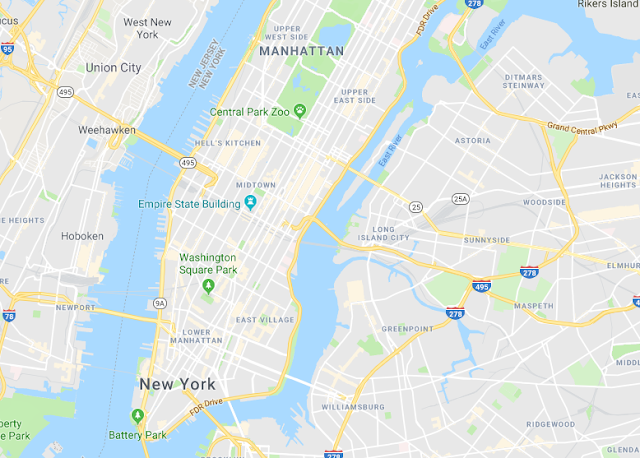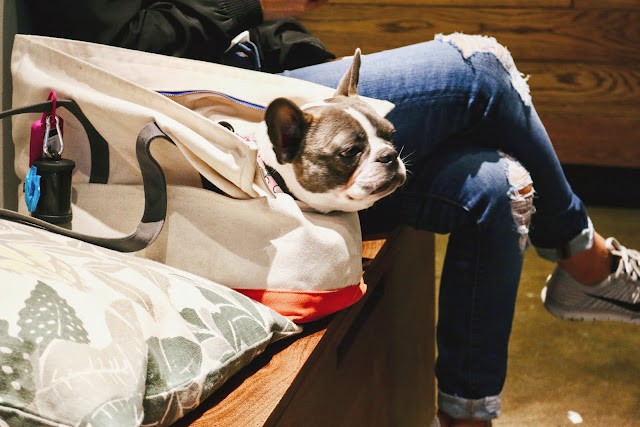It doesn't matter whether its 4 in the afternoon or 4 in the morning, the residents of New York City will undoubtedly beep their horns just because they can. Now I can see why coffee is so popular here - everyone is hyped up with all the caffeine running through their veins.
So you're probably thinking ‘you went all the way to America to go for a coffee tour’ not exactly, no. But, I did manage to squeeze in a few coffee shops in on my travels around the Big Apple. I visited the 3 most quaint and social coffee shops I could find. They also had the BEST coffee. Well I didn't expect anything less considering I was in the home of coffee and roasting.
First stop was Bluestone Lane Coffee.
Squeezed into an apartment block lobby round the back of the New York Stock Exchange sat this unassuming coffee shop! Hardly being able to see it from the road due to the scaffolding we made our way to the bar.
Bluestone Lane have a number of artisan coffee shops scattered all around NYC they also roast all their own coffee. Yes they have the usual drinks, Flat White, Latte, Espresso. But Bluestone have something with a bit more of a kick. The drink I opted for was called Magic. The ‘Magic’ consists of 4 shots of espresso and merely a splash of milk. You can imagine what I was thinking, only in America right?
The mixed roast consisted of Brazilian and Columbian coffee beans. It had a velvety texture to it that swam across your taste buds into your throat. With its honest vanilla nutty notes backed up with a powerful milk chocolate aftertaste. What a treat!
Oh and it turns out you can bring your dog in if they can chill in a bag....
Next up was Birch Coffee.
Another home grown coffee shop originating in NYC. This small and unassuming shop front is more of a magic cape to hide its coffee amazingness inside! You could barely fit 6 people into the space but they had a trick up their sleeve. Big folding windows brought everyone outside in making it a hugely social space.
It was obvious this was a great place. It was overflowing with customers. Everyone with a Birch Coffee cup in their hands. The atmosphere of this unique rustic shop was beaming literally through the windows! It's the small quirks that make places like these unique. For example their 'Question of the day' - give it a little contemplation and your coffee is ready before you know it.
I ordered a Cortado and the measurements were perfect, with just the right amount of kick for my travels that day. The intense notes that came from this traditional mixed roast were unbelievable. So distinct and noticeable. The prominent flavours were dark chocolate which always goes down well with a serving of creamy soft milk. This Cortado had to be my favorite of my whole trip.
Finally while wandering the streets of New York in the glistening morning sunshine we found another small Brooklyn born coffee shop. Culture 307.
The 307 in the name represents the door number as they have 2 other shops around the city. Those being 72 and 247 which are no more than a couple of Avenues away both East and West. This shop was a very contemporary, sleek, and simple styled interior with huge class panes on the front and a simple coffee bar area towards the rear.
We actually went here for our breakfast so it was only right we treated ourselves to a breakfast treat! Sophie had a Pistachio loaf and I had a cinnamon infused croissant, both absolutely divine but also not very breakfasty but hey we’re in New York, it doesn't matter right?
The coffee again was roasted by Culture themselves which is something I look for when digging out these gems. There’s something more authentic about the shop if they have personally overseen the roasting of the beans they are going to offer. Both my Piccolo and Sophie's Flat White were full of bold flavours and the milk's texture was the close to the highest quality I had that holiday.
Another spectacular find which left me wanting more! I tried to squeeze another Culture Coffee shop into Sophie's very tight itinerary! Apparently we weren't there for just coffee, who knew eh?
So if you are planning of going to the Big Apple in the future and you need a little lift while your out and about sight seeing I hope this helps! And for those who have no intention on going there, thank you for reading!
Until next time, keep grinding.























































